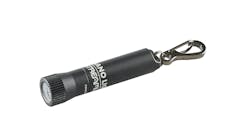DuPont Flurochemicals affirms confidence that HFO-1234yf refrigerant safe for use in vehicles
Following a meeting with Daimler on its recently announced tests related to the safety of HFO-1234yf, DuPont Fluorochemicals (DuPont) affirms its continued confidence that this product can be used safely as an automotive refrigerant.
"We met with Daimler to understand their testing approach and results, and based on these discussions, DuPont has concluded the testing does not represent new information," said Diane Iuliano Picho, global business manager, Opteon refrigerants.
"It is well known that HFO-1234yf is a mildly flammable refrigerant," added Picho. "Extensive flammability testing was completed by independent globally recognized third-party laboratories. Multiple risk assessments by industry stakeholders, including Daimler, have thoroughly evaluated the product's flammability, and have shown that there is no significant additional risk for HFO-1234yf versus the current refrigerant."
Two globally recognized industry standards organizations, the International Standards Organization (ISO) and the SAE Interior Climate Control Committee (SAE ICCC), also have developed safety and use guidelines for employing refrigerants with low global warming potential, such as HFO-1234yf. These provide guidance to vehicle manufacturers for safe design of automotive air-conditioning systems.
The SAE CRP 1234 Industry Summary, issued Nov. 10, 2009, summarized a comprehensive refrigerant flammability evaluation conducted by 15 automotive companies including Daimler, as well as third-party laboratories with flammability testing expertise. The project summary stated that "flammability testing at Hughes Associates, Ineris, and Exponent labs have demonstrated the difficulty in igniting the HFO-1234yf refrigerant under the most severe testing conditions." An SAE International presentation on this research program stated that "risk assessments have concluded there is an extremely low probability of ignition of refrigerant associated with HFO-1234yf during an accidental release."
The sponsors of the SAE International program concluded that "HFO-1234yf can be safely accommodated through established industry standards and practices for vehicle design, engineering, manufacturing, and service."
A recent presentation at the European Automotive Air-Conditioning Convention, co-authored by Daimler and presented by the German automakers association (VDA) on Sept. 17, 2012, in Frankfurt, Germany, concluded that "R1234yf equipped vehicles are as safe as those using R134a – for occupants, mechanics, first emergency responders and fire fighters."
DuPont co-developed HFO-1234yf in response to Europe's Mobile Air Conditioning (MAC) Directive, which requires an automotive refrigerant with a global warming potential (GWP) under 150. HFO-1234yf refrigerant has a GWP of 4, which is 99.7 percent lower than the refrigerant used in most cars today. In addition, HFO-1234yf enables energy efficiency and has an optimal balance of safety, performance, sustainability and cost.
"This new refrigerant delivers important benefits while meeting a range of safety and performance needs," said Picho. "DuPont has offered to provide technical expertise to work with Daimler and other automotive OEMs to resolve questions about the adoption of HFO-1234yf as a more sustainable automotive refrigerant, in time to meet the requirements of the MAC Directive by January 1, 2013."
For more details on the SAE International research program, please visit http://www.sae.org/servlets/pressRoom?OBJECT_TYPE=PressReleases&PAGE=showRelease&RELEASE_ID=1109.

